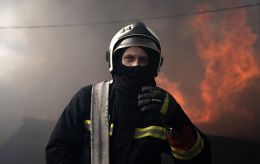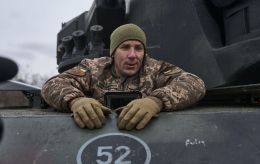Pokrovsk, Kurakhove and new threat in the south: What's happening on the frontline
 Southern Donetsk region becomes the epicenter of fighting (photo: GettyImages)
Southern Donetsk region becomes the epicenter of fighting (photo: GettyImages)
In recent weeks, the most active front directions are Kupiansk, Pokrovske, Kurakhove, and Vuhledar. How they are interconnected, what is happening at the front, and the plans of the Russian occupiers are covered in the report by RBC-Ukraine.
Over the past week, the Russians have managed to occupy one of the largest areas of Ukrainian territory since the beginning of the year. The epicenter of the most intense fighting is in the southern part of the Donetsk region. There is no talk of a Ukrainian front collapse yet; the situation is not equally critical in all sectors.
However, the enemy's creeping advance continues in several directions - Kupiansk, Pokrovske, Kurakhove, and Vuhledar - and has not slowed down. Additionally, there is a threat that the enemy may intensify attacks in another currently relatively stable area.
Northeast
Since mid-October, there have been no significant changes in the Kursk operational zone. As part of its counteroffensive, the enemy managed to push Ukrainian units from the area of Korenivka and Snagost toward Novoivanivka. Ukrainian forces are attempting counterattacks there. Simultaneously, the Russians aim to push Ukrainian units east of Sudzha. After liberating the village of Borky, the enemy advanced into Ruska Konopelka but failed in attempts to capture Plekhovo.
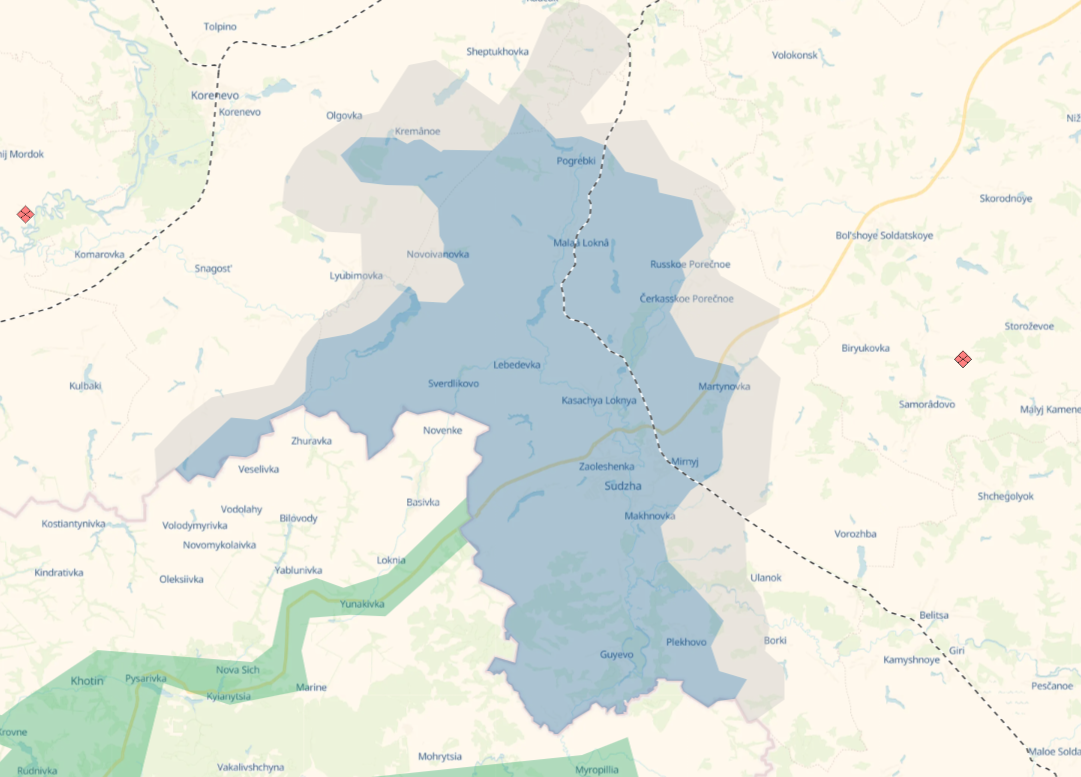
Kursk bridgehead (map: DeepState)
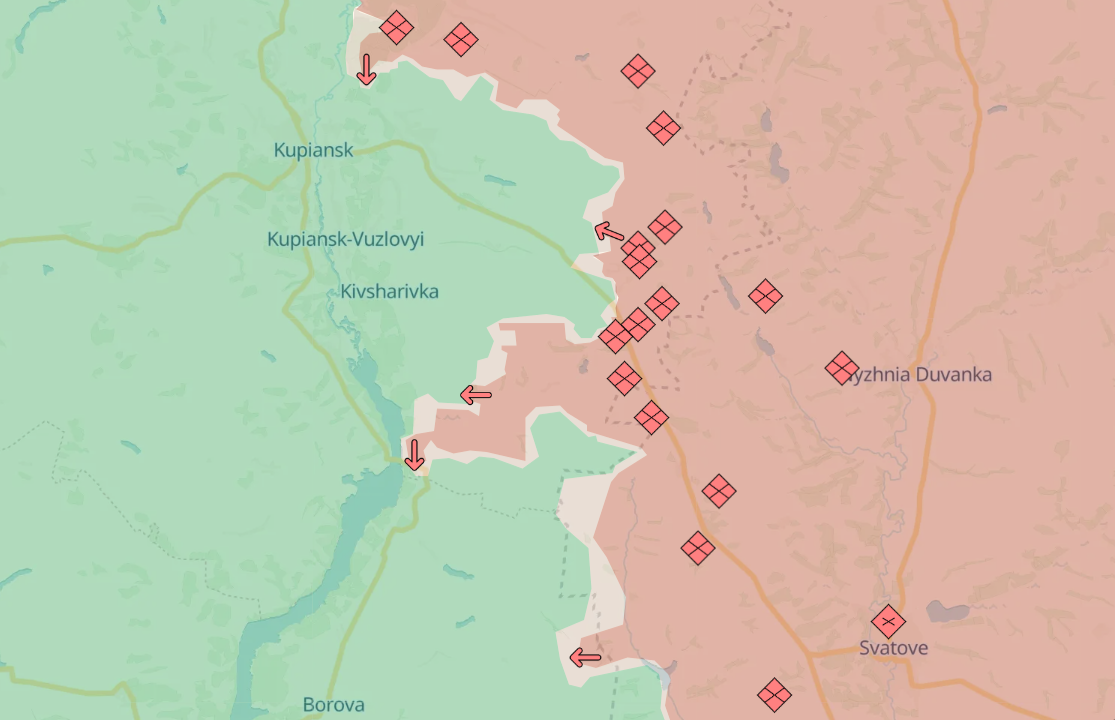 Kupiansk direction (map: DeepState)
Kupiansk direction (map: DeepState)
It appears that the enemy plans to compress the Ukrainian Armed Forces' bridgehead toward the Sudzha-Sumy road from different sides. This goal is still distant, as the Russian counteroffensive is proceeding relatively slowly. It seems this is intentional: for faster progress, Moscow would need to draw additional forces from other directions, thereby sacrificing momentum in those areas – something it doesn’t want to do.
In the Kharkiv direction near Lyptsi and Vovchansk, the situation remains unchanged. However, near Kupiansk, the Russian army achieved a significant objective they had been pursuing for over a year – reaching the Oskil River. After advancing to the village of Kruhlivka, the Ukrainian bridgehead on the left bank of the Oskil has been split in two. This also complicates the position in Borova, as the enemy has effectively cut off the supply route that ran along the Oskil from the eastern part of Kupiansk. The Russians are now trying to break through to Kupiansk itself from Synkivka.
In trying to understand the enemy’s logic, it seems that occupying the Kharkiv region or Kupiansk itself is not their current goal. They may not even plan to cross the Oskil, as nearly all crossings have been destroyed. Instead, they are likely moving south. The left bank bridgehead of this river is essential for Russia’s goal of occupying northern the Donetsk region, including Lyman, Siversk, and the Sloviansk-Kramatorsk agglomeration. The Oskil River would also shield them from a flank attack from the west by Ukrainian forces. We may soon see an increase in enemy activity in the Lyman and Siversk directions.
Northern Donetsk region
The situation near Chasiv Yar shows signs of worsening. For a long time, the Siverskyi Donets-Donbas canal, which divides the city into a larger western and smaller eastern part from north to south, prevented the advance of the occupiers within the city limits.
However, the Russians have opted for a tactic they've used frequently - encircling cities from multiple directions to avoid urban combat as much as possible and force Ukrainian troops to withdraw under threat of encirclement. In mid-October, the enemy advanced north of the city, partially securing a foothold in the Zhovtnevyi district on the western bank of the canal.
At the same time, the enemy breached the canal to the south of the city, where it intersects with highway T0405 (N-32), and they are now trying to move along this road. If control of Chasiv Yar is lost, the occupiers’ next target in this direction will likely be the city of Kostiantynivka, another key logistical hub for our forces in the Donetsk region.
 Chasiv Yar and Toretsk sector (map: DeepState)
Chasiv Yar and Toretsk sector (map: DeepState)
The active Russian advance in the south is currently constrained by the Ukrainian military holding a section near Klishchiivka, which poses a flanking threat to the enemy.
The enemy’s progress along the H-32 highway increases the threat to the entire Toretsk defense area. In recent days, Ukrainian units managed to regain positions within Toretsk after the enemy breached its center. Russian forces were pushed back to the eastern part of the central district. It’s likely that if we lose control of this city, the occupiers will continue toward Kostiantynivka.
Southern Donetsk region and new threat
Soon, the Russian troops may resume an intense offensive toward Pokrovsk. They have become active again along the Novohrodivka-Hrodivka line, east of the city, possibly to push toward Myrnohrad.
Meanwhile, the enemy has seemingly gained full control over the city of Selydove in the Pokrovsk direction, posing an encirclement threat to our forces there. After occupying it, the Russians are expected to advance toward Pokrovsk, likely to encircle it from the south.
Losing control of Selydove has also worsened the situation for our units defending southward - north of the Kurakhove Reservoir. The occupiers are attempting to push Ukrainian forces out from there to enable an advance toward Kurakhove, another logistical center for our forces in the south. Likely, Ukrainian units will soon have to retreat at least to the Izmailivka-Kurakhivka-Ostrivske line to avoid encirclement. The enemy is now approaching Kurakhove from the east, from the direction of Maksymilianivka.
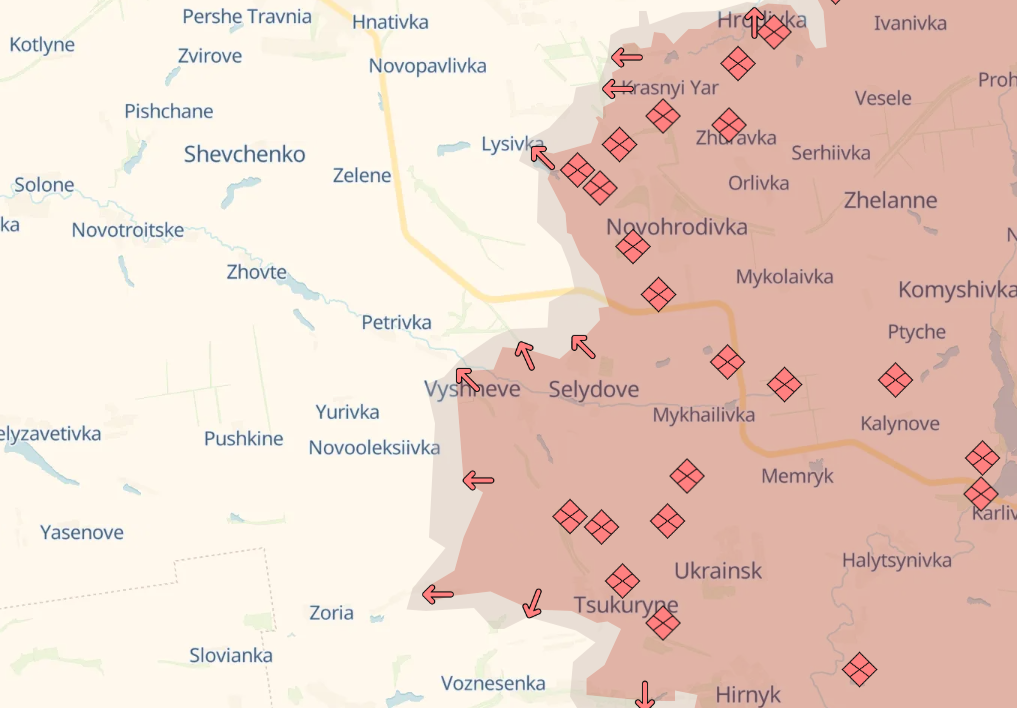
Pokrovsk, Kurakhove, and Vuhledar directions (map: DeepState)
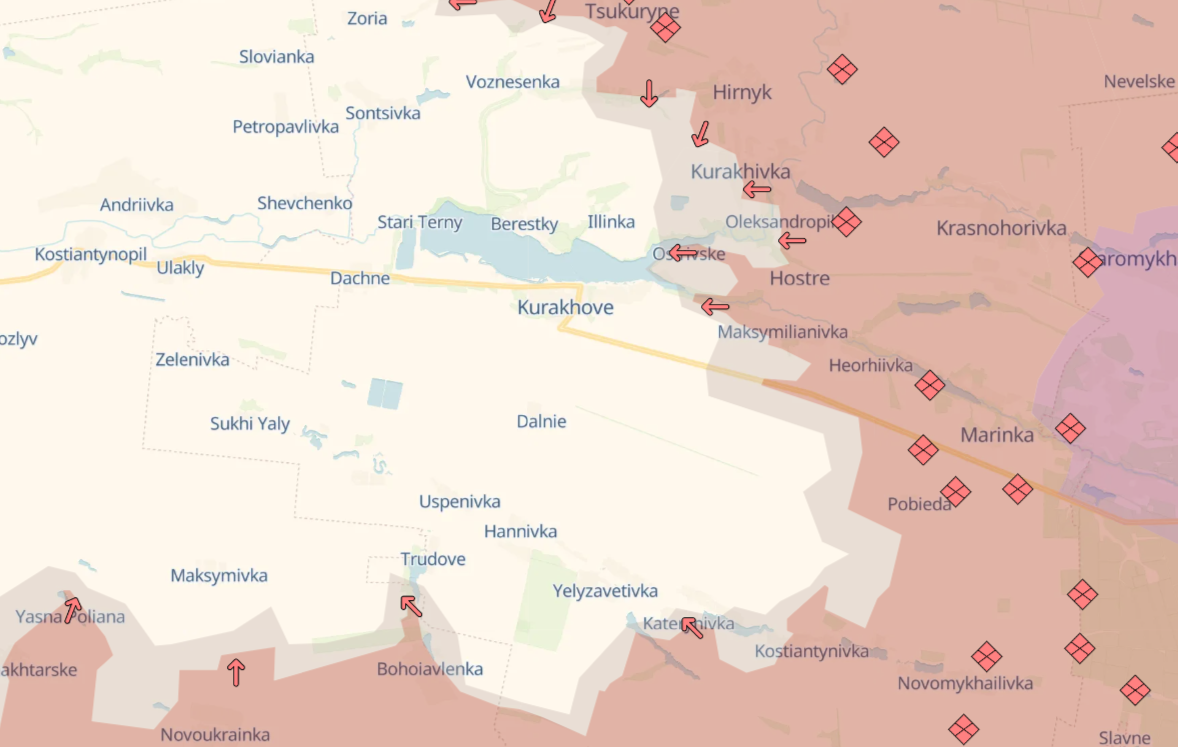
Pokrovsk, Kurakhove, and Vuhledar directions (map: DeepState)
The fall of Vuhledar has exacerbated the situation for Kurakhove, as the occupiers now advance not only from the north and east but also from the south - from several villages along the Shakhtarske-Katerynivka line. All these settlements lie up to 10 kilometers north of Vuhledar - the distance the enemy advanced after capturing the city in early October. Losing Kurakhove could endanger the neighboring area to the south of the Donetsk region - specifically, the area around Velyka Novosilka.
Soon, a new threat may emerge in the south. Some military and political sources are concerned that Russia could launch an offensive within the Zaporizhzhia region. Possible attack directions are Huliaipole, Orikhiv, and Kamianske, where enemy sabotage and reconnaissance groups have been increasingly active recently. The Russians’ potential goal could be to advance at least 30 kilometers deeper to move closer to Zaporizhzhia and push our forces further from Enerhodar and the Zaporizhzhia Nuclear Power Plant, eventually negotiating from a position of strength. Our forces are preparing to counter this scenario.
***
Currently, Ukraine is facing one of the most critical periods in the war. Amid either fatigue or preoccupation among our partners with their issues, no one can help us better than we can help ourselves. The Russians are fighting at the peak of their combat capability. Their further advance or halt depends primarily on whether the Ukrainian Armed Forces can address the problems preventing not just stopping the aggressor but also conducting effective defense. These issues range from demotivation and lack of personnel, inadequate coordination between units, and construction of fortifications to, in some cases, ineffective command at the lower and middle levels.
